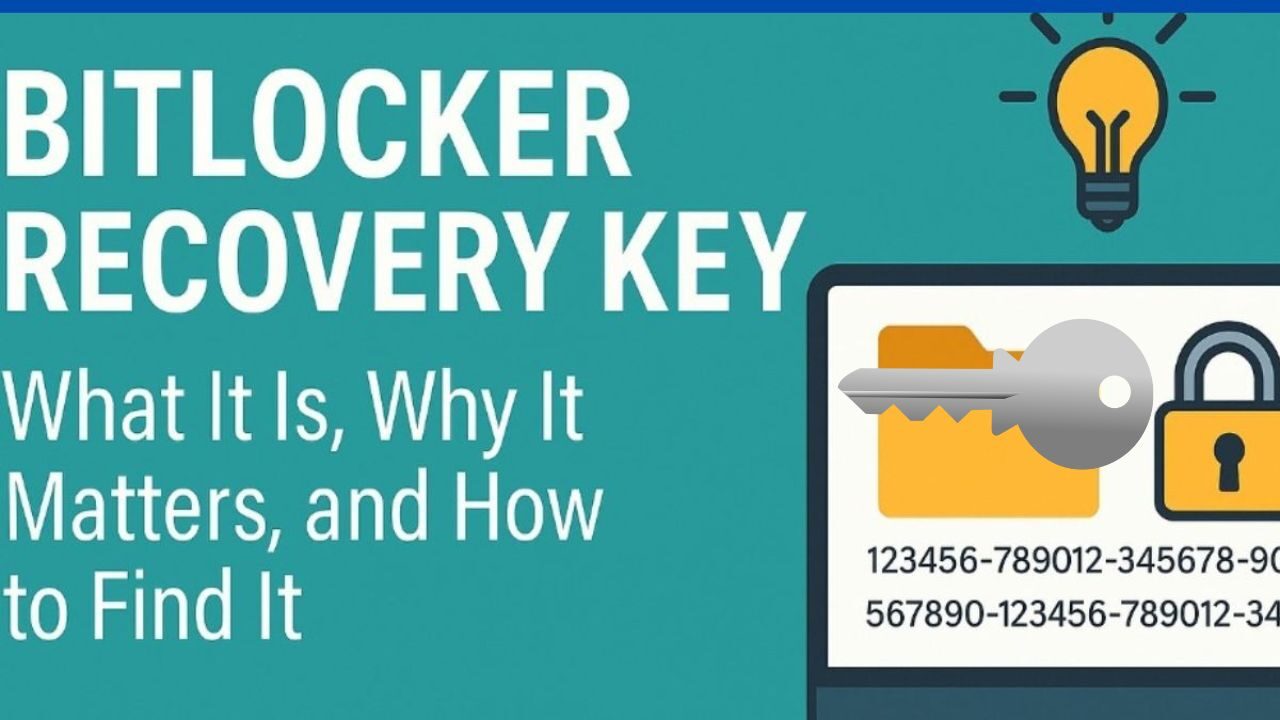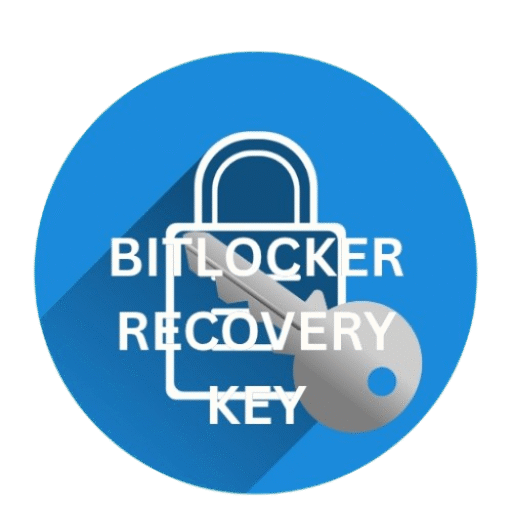
BitLocker Recovery Key: What It Is, Why It Matters, and How to Find It
Windows Error Code is a general happening in day to day working life of a computer user. Microsoft Corporation, the creator of Windows Operating System has also created the solution for this. This solution is called Bitlocker Recovery Keyl.
In this easy-to-understand article, we’ll explain:
- What the BitLocker Recovery Key is
- Why it appears
- How to find it
- What to do if you lose it
- How to keep it safe for next time
What is BitLocker?
BitLocker is a security tool built into Windows. It helps protect your files by encrypting (locking) the data on your computer’s hard drive.
| Without BitLocker | With BitLocker |
|---|---|
| Anyone can read your files if they take out your hard drive. | Your files are scrambled and locked without a special key. |
| Easy for hackers to steal data. | Harder for anyone to get in without permission. |
What is a BitLocker Recovery Key?
A BitLocker Recovery Key is a 48-digit number that helps unlock your computer if BitLocker can’t be sure it’s you.
It looks something like this:
123456-789012-345678-901234-567890-123456-789012-345678
🔑 Think of it like:
- A backup key to your house
- A password reset for your files
- A way to prove you’re the owner of the computer
Why Does BitLocker Ask for the Recovery Key?
Your computer only asks for the Recovery Key when it thinks something has changed or gone wrong. Here are some common reasons:
🛠️ When BitLocker Might Ask for Your Recovery Key:
- You changed your computer’s motherboard
- You updated the BIOS or firmware
- You moved the hard drive to another computer
- There were too many incorrect password attempts
- You reset or reinstalled Windows
- You enabled BitLocker by accident and didn’t save the key
How to Find Your BitLocker Recovery Key
If your computer is asking for the key, don’t panic! Microsoft gives you several places where your Recovery Key might be saved.
| Location | Description |
|---|---|
| Microsoft Account | If you signed in with a Microsoft email, check your devices |
| USB Drive | You might’ve saved it to a USB when BitLocker was set up |
| Printed Copy | Maybe you printed it out and put it in a drawer |
| Work or School Account | Your company or school IT department may have saved it |
| Cloud Account (Azure AD) | If you’re part of a business using Azure Active Directory |
| Saved File on Another PC | Sometimes the key is saved as a .txt file — search for it |
📍 Step-by-Step: How to Check Your Microsoft Account for the Key
- On another device, go to https://account.microsoft.com/devices
- Sign in with the same email used on your locked PC
- Look for your device name and click “Manage Recovery Keys”
- Your BitLocker Recover Key should be there!
What to Do If You Lost Your BitLocker Recovery Key
🧭 What to Do:
- Check email printouts, USB drives, or photos
- Ask your IT department (if it’s a work or school device)
- Search for
*.txtfiles on backup drives - Try old Microsoft accounts you may have used
❗ If You Can’t Find the Key
If you really can’t find the key, there’s no backdoor. BitLocker is built to be strong — even Microsoft can’t unlock it without the key.
Your only option is to reset the PC and erase everything.
How to Back Up Your BitLocker Key (So You Never Lose It Again)
💾 Ways to Save Your Key:
- Save to your Microsoft account (Best for most people)
- Save to a USB flash drive
- Save to a file (on another computer)
- Print it out (store in a safe place)
📋 How to Back Up the Key for Perticular Windows Error Code?
- Press
Windows + Sand search for “Manage BitLocker” - Click on “Back up your recovery key”
- Choose where to save it
BitLocker for Home vs. Work: What’s the Difference?
| Feature | Home User | Work/School Device |
|---|---|---|
| Key stored in Microsoft acct. | Usually yes | May use Azure AD or IT system |
| Admin control | You control your own device | IT can manage encryption |
| Recovery key responsibility | You’re fully responsible | IT may recover key for you |
BitLocker Recovery Key: Myths vs. Facts
| Myth | Truth |
|---|---|
| “There’s a backdoor to get in.” | ❌ Nope — not even Microsoft can help. |
| “I can hack around the encryption.” | ❌ BitLocker is very strong — don’t try. |
| “It only asks for the key if I break it.” | ❌ Even updates or power loss can trigger it. |
| “I’ll never need the recovery key.” | ❌ You’ll be glad you saved it when you do. |
Real-Life Example: Jamie’s Story
Jamie got a Windows laptop for school. One day, after a system update, the screen said:
“Enter BitLocker Recovery Key.”
Jamie had no clue what that was. After a moment of panic, she remembered saving it to her Microsoft account. She logged in on her phone and — boom — the key was there. She typed it in, and her computer was back to normal.
Moral of the story? Save your key — and remember where!
Tips to Avoid BitLocker Headaches
- ✅ Save your key in more than one place
- ✅ Use your Microsoft account when setting up Windows
- ✅ Label your USB clearly
- ✅ Don’t disable BitLocker without backup
- ✅ Ask IT before making changes to work/school laptops
FAQ: BitLocker Recovery Key
Q1: Can I get my BitLocker Recovery Key from Microsoft support?
No, Microsoft can’t give you the key. Only you (or your IT admin) can access it.
Q2: What if I reinstalled Windows and now it’s asking for the key?
That can happen! You’ll need the recovery key to get back in.
Q3: Is BitLocker only on Windows 10/11 Pro?
Mostly yes. Some Windows Home devices use a lighter version called “Device Encryption.”
Q4: How can I know if BitLocker is on?
Search “Manage BitLocker” in the Start menu. It will show the status of each drive.
Q5: Can I turn off BitLocker?
Yes — but do so carefully and only if you’ve backed up your recovery key.
Final Thoughts: Don’t Wait Until It’s Too Late
BitLocker is like a superhero for your data — but every superhero needs a backup plan. That backup is your Recovery Key.
Here’s your final checklist:
- 🟢 Did you save your key?
- 🟢 Do you know where it is?
- 🟢 Did you back it up to more than one place?
If yes — you’re ready! If not — go save that key now!
If want an in-depth knowledge of other Windows Error Codes, please visit my blog HERE.
